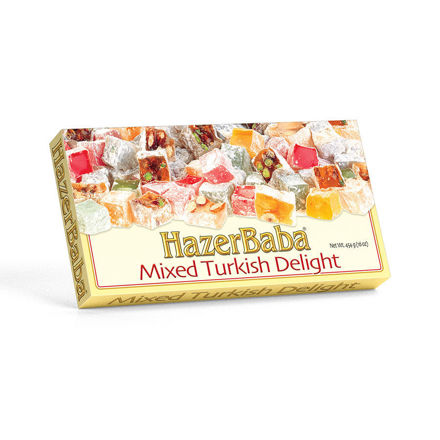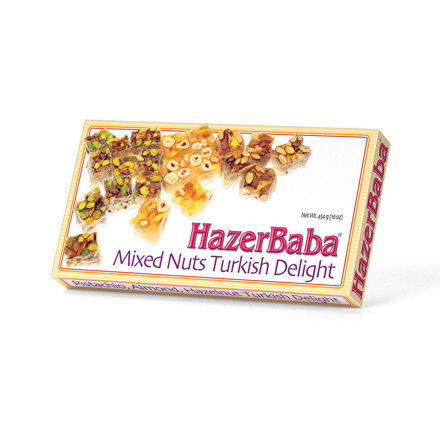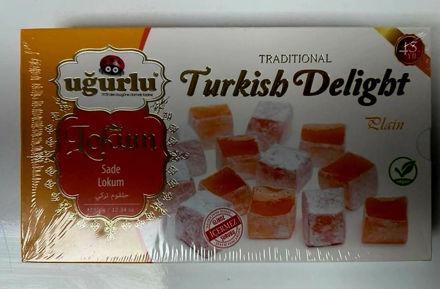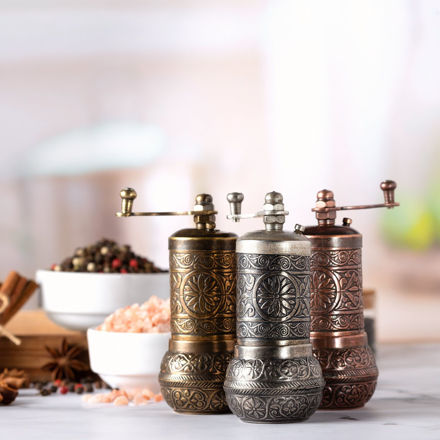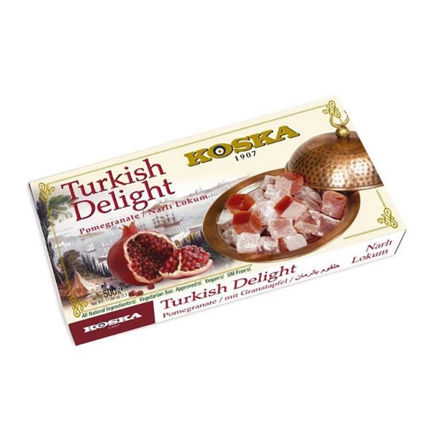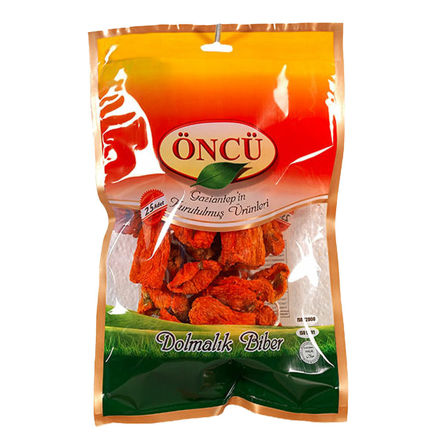Grand Bazaar
The Turkish word for lokum comes from the Arabic name rahat al-hulqum meaning “comfort of the throat”. Invented by an Ottoman villager, this incredible sweet was first sold in a confectionery shop in late 18th century. Shortly after, it was introduced to Europe, Turkish delight became a major delicacy in Britain, as well as throughout Continental Europe for the aristocracy. Indeed, it had become common practice among upper class socialites to exchange lokum pieces wrapped in silk handkerchiefs. The roots of Hazer Baba dates back to 1888. It was the first company which used modern equipment and production techniques, while strictly being loyal to authentic recipes. This brought rapid success to Hazer Baba, since the company was able to preserve the original taste of Turkish delight without compromising today’s high standards of food safety. Hazer Baba has become a well-known brand in over 30 countries, single-handedly producing the majority of all Turkish delight exports.
$14.99
The Turkish word for lokum comes from the Arabic name rahat al-hulqum meaning “comfort of the throat”. Invented by an Ottoman villager, this incredible sweet was first sold in a confectionery shop in late 18th century. Shortly after, it was introduced to Europe, Turkish delight became a major delicacy in Britain, as well as throughout Continental Europe for the aristocracy. Indeed, it had become common practice among upper class socialites to exchange lokum pieces wrapped in silk handkerchiefs. The roots of Hazer Baba dates back to 1888. It was the first company which used modern equipment and production techniques, while strictly being loyal to authentic recipes. This brought rapid success to Hazer Baba, since the company was able to preserve the original taste of Turkish delight without compromising today’s high standards of food safety. Hazer Baba has become a well-known brand in over 30 countries, single-handedly producing the majority of all Turkish delight exports.
$15.99
With origins dating back to 18th century Turkey, Turkish Delights are square gel-based confections made with cornstarch and sugar syrup, sometimes with special flavorings, and oftentimes chopped nuts or shredded coconut. Turkish Delights, known as “Lokum” in Turkey and the Middle East and “Loukoúmi” in Greece, were considered rare delicacies during the Ottoman Empire. Today, these dense, chewy candies are popular Mediterranean, Middle Eastern and Southeastern European sweets. Koska Turkish Delight Hazelnut feature chunks of crunchy hazelnuts in each square, with a coating of icing sugar. Koska is the largest producer and exporter of Lokum in Turkey and still uses the original, traditional family recipes for all their offerings.
$9.99 $13.99
Suitable for grinding spices, pepper, coriander, salt, cardamom, mustard, cumin, sumac. Manual Pepper Mill with Handle,MADE IN EUROPE: Most of our products are sourced from several countries like Italy, Bosnia, and Turkey.
$14.99
With origins dating back to 18th century Turkey, Turkish Delights are square gel-based confections made with cornstarch and sugar syrup, sometimes with special flavorings, and oftentimes chopped nuts or shredded coconut. Turkish Delights, known as “Lokum” in Turkey and the Middle East and “Loukoúmi” in Greece, were considered rare delicacies during the Ottoman Empire. Today, these dense, chewy candies are popular Mediterranean, Middle Eastern and Southeastern European sweets. Koska Turkish Delight Hazelnut feature chunks of crunchy hazelnuts in each square, with a coating of icing sugar. Koska is the largest producer and exporter of Lokum in Turkey and still uses the original, traditional family recipes for all their offerings.
$9.99 $13.99
Dried Bell Peppers consist of carefully selected and dried bell peppers. Thanks to the dried bell peppers, you can make delicious and healthy meals. You can first soak the dried peppers in hot water for a while and let them soften. Or you can boil the peppers by throwing them in boiling water until they are soft. Take care that the bell peppers do not soften too much, as you will cook them after they are filled. You can fill the peppers with a filling that you prepare according to your own taste. You should store dried bell peppers in a cool and dry environment. You can also put the bell peppers in an airtight container and keep them in the freezer.
$10.99
Min: $1.00 Max: $70.00
$1 $70
















